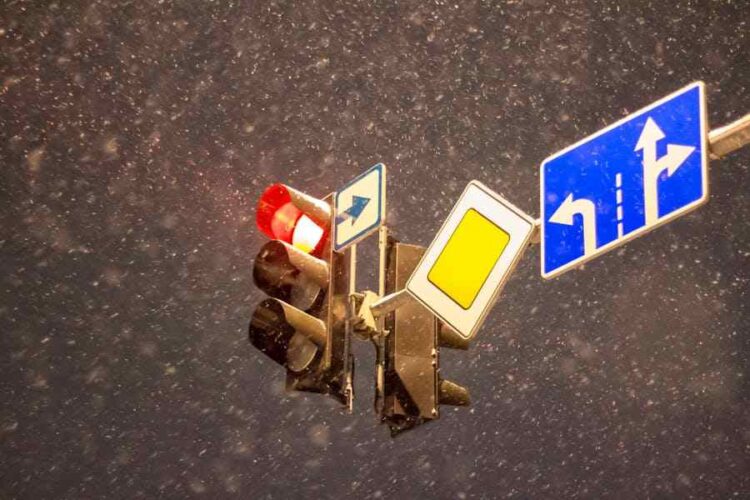Red light cameras are installed in many cities to capture images of drivers running red lights, ensuring better traffic law enforcement. However, many drivers wonder: Do red light cameras go on your record? The answer depends on state laws, how violations are processed, and whether they are considered moving violations.
While some jurisdictions treat red light camera tickets as civil infractions that do not impact your driving record, others may classify them as moving violations that can result in points on your license. Understanding how these violations are handled, their effect on insurance rates, and whether they appear in background checks is essential for every driver. This article explores the impact of red light cameras on driving records, potential penalties, and what to do if you receive a citation.
Do Red Light Cameras Go on Your Record?
If considered civil infractions, red light camera violations generally do not go on your record. However, in some states, they are classified as moving violations, which may lead to points on your license and higher insurance rates. Check your local traffic laws to determine how red light camera tickets are handled in your area.
How Do Red Light Cameras Work?
Red light cameras are advanced traffic enforcement tools that capture images of vehicles that fail to stop at red lights. These systems operate through sensors embedded in the roadway and high-resolution cameras positioned at intersections. When a vehicle crosses the designated stop line after the traffic light has turned red, the sensors activate the camera, which takes a series of clear images, including the vehicle’s license plate. Some systems also capture short video clips to provide additional evidence of the violation.
Once the images and footage are collected, law enforcement officials review the evidence to verify the violation before issuing a citation. The ticket is then mailed to the registered owner of the vehicle, who is responsible for paying the fine or contesting the charge if they believe it was issued in error. Traffic and Red Light Cameras play a significant role in automated traffic enforcement but also raise concerns about accuracy and fairness. In many cases, the ticket includes details about the violation, such as the infraction’s time, date, and location, along with instructions on how to respond.
While the process seems straightforward, there are ongoing debates about the accuracy and fairness of red light cameras. Some drivers argue that these systems can malfunction, capturing images of vehicles that may have legally entered the intersection under specific circumstances, such as making a permitted right turn. Additionally, questions remain about how these violations are classified, whether they appear on a driver’s record, and if they impact insurance rates. Understanding how red light camera tickets are processed and enforced is crucial for drivers who want to know their rights and responsibilities.
Do Red Light Camera Tickets Go on Your Driving Record?
State-Specific Traffic Laws
The impact of red light camera tickets largely depends on each state’s traffic laws. Some states classify these violations as civil penalties, meaning they do not result in points being added to a driver’s record. In such cases, the ticket is treated similarly to a parking violation and does not impact the driver’s insurance rates. However, other states consider red light camera violations as moving violations, which can have more serious consequences. If categorized as a moving violation, the offense may lead to points on the driver’s record and potential increases in insurance premiums. Understanding how red light camera violations are handled in your state is crucial to knowing what to expect if you receive a citation.
How Moving Violations Affect Your Record
If a red light camera ticket is classified as a moving violation, it will likely appear on your driving record. Accumulating too many points on a record can lead to further penalties, such as license suspension, mandatory defensive driving courses, or even increased fines for future infractions. Some states have specific license suspension thresholds, meaning repeated violations can have long-term consequences. Additionally, insurance providers often check driving records to determine risk levels, and having a red light camera violation on record may lead to higher premiums.
The Role of the Registered Owner
In most cases, red light camera citations are automatically issued to the vehicle’s registered owner. This means that even if someone else was driving at the time of the violation, the ticket will still be sent to the person whose name appears on the vehicle registration. Some states, however, allow registered owners to contest the ticket by providing evidence that they were not behind the wheel. This may involve submitting an affidavit, proving the car was stolen, or identifying the driver.
Disputing a Red Light Camera Ticket
Drivers who believe they have received a red light camera ticket unfairly have the right to dispute the citation in court. Several common defenses can be used, including proving that the vehicle was misidentified, that the image captured by the camera was unclear, or that the driver lawfully entered the intersection while the light was still yellow. Some drivers may also challenge the red light camera system’s accuracy, questioning its calibration, maintenance, or proper functionality. Successfully disputing a red light camera ticket requires strong supporting evidence, such as witness statements, dashcam footage, or official traffic reports.
Effects of Red Light Camera Violations on Insurance Rates
-
Do Red Light Camera Tickets Increase Insurance Premiums?
In many states, red light camera violations do not impact insurance rates because they are classified as civil infractions rather than moving violations. Since these tickets are often issued to the vehicle’s registered owner rather than the actual driver, they are not typically recorded on a driver’s history. As a result, insurance companies may not consider them when determining premiums. However, this varies by state, and it is essential to check local regulations regarding red light camera citations.
-
Moving Violation Penalties and Insurance Rates
If a red light camera ticket is treated as a moving violation, it can directly affect insurance premiums. Insurance providers often view moving violations as indicators of risky driving behavior, leading to increased rates. Drivers who accumulate multiple moving violations, including red light tickets, may be classified as high-risk, which can result in significantly higher insurance costs. In some cases, multiple infractions can lead to policy cancellation or difficulty finding affordable coverage.
-
Insurance Company Policies on Red Light Camera Tickets
Each insurance company has its guidelines regarding traffic violations, including red light camera tickets. Some insurers disregard red light camera violations if they do not result in points on a driver’s record, while others may factor them into their overall risk assessments. Drivers should review their insurance provider’s policies or consult an agent to understand how a red light camera ticket could impact their premiums. When a ticket leads to increased rates, shopping for alternative coverage options may help find better pricing.
How to Avoid Red Light Camera Tickets
- Always Come to a Complete Stop: One of the most effective ways to avoid red light camera tickets is to stop at all red lights, even when turning where permitted. Many drivers receive citations because they slow down but fail to come to a complete stop before making a right turn on red. To avoid this, ensure your vehicle fully stops behind the designated stop line before proceeding. Taking an extra second to verify your stop can prevent unnecessary fines and ensure compliance with traffic laws.
- Stay Aware of Traffic Signals: Being attentive to traffic signals can help you anticipate light changes and avoid running a red light. Intersections equipped with red light cameras often have sensors that detect vehicles entering after the light has turned red. By slowing down as you approach an intersection and preparing to stop when necessary, you can reduce the risk of accidentally triggering the camera system. Defensive driving techniques, such as scanning ahead and adjusting speed accordingly, can further enhance road safety.
- Know the Locations of Red Light Cameras: Many cities and municipalities post signs indicating the presence of red light cameras near intersections where they are installed. Staying informed about these locations can help you exercise extra caution when approaching these intersections. Some drivers use GPS navigation apps that alert them to known red light camera locations, allowing them to be more mindful of their driving behavior.
- Challenge Unjust Citations: If you receive a red-light camera ticket that you believe was issued unfairly, you have the right to dispute it in court. Common reasons for contesting these tickets include unclear images, incorrect vehicle identification, or the light still being yellow when you entered the intersection. Gather relevant evidence, such as dashcam footage or witness statements, to support your case. Many jurisdictions offer online or in-person hearings where drivers can present their disputes and potentially have their citations dismissed.
Final Remarks
So, do red light cameras go on your record? The answer depends on where the violation occurred and how the ticket is classified. Red light camera violations often do not result in points or impact insurance premiums. However, in states that are treated as moving violations, they can affect a driver’s record and increase insurance costs.
Understanding your local traffic laws and the best ways to contest red light camera citations can help you manage any penalties effectively. Following traffic rules and staying informed can avoid unnecessary fines and potential impacts on your driving history.
FAQ’s
Q. Can I ignore a red light camera ticket?
A. Ignoring a red light camera ticket can lead to additional fines, collection agency involvement, and even license suspension in some states.
Q. How can I check if a red light camera ticket is on my record?
A. You can check your driving record through your state’s Department of Motor Vehicles (DMV) or equivalent authority.
Q. What happens if I wasn’t driving but received a red light camera ticket?
A. Most jurisdictions allow the registered owner to contest the ticket by proving they were not driving at the time of the violation.
Q. How long does a red light camera ticket stay on my record?
A. If the ticket is classified as a moving violation, it can stay on your record for 3 to 5 years, depending on state laws.
Q. Do all states use red light cameras?
A. No, red light camera usage varies by state and city. Some states have banned them altogether, while others heavily rely on them for traffic enforcement.









